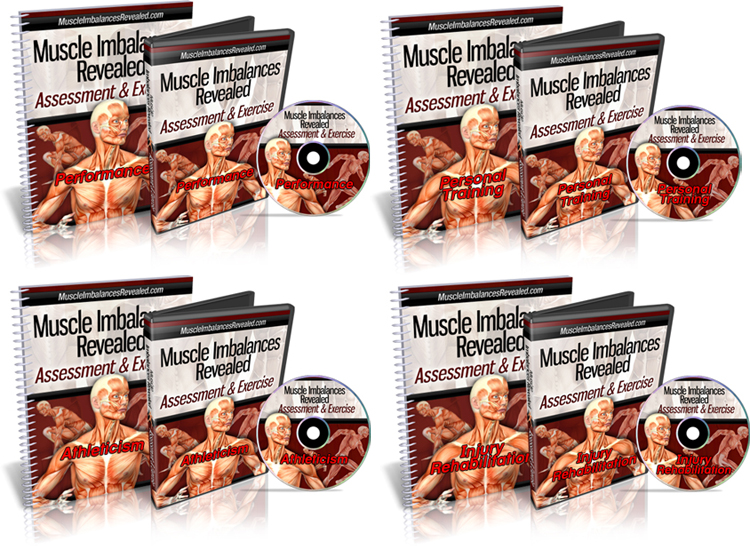Muscle Imbalances Part Three: Enter the Izzo
Continuing this Odessy – length journey through the wonder that is Muscle Imbalances Revealed: Assessment and Exercise, I’m going to be bringing you part three featuring the presentation by John Izzo. You should also check out Part One and also Part Two where I review the presentations by Nick Rosencutter and Anthony Mychal respectively.
Now, I’ve known John and corresponded back and forth with him for probably about 3 years now, although the exact timeframe escapes me. J-to the Izzo is a pretty cool guy, purposely stepping away from a lot of the marketing and self-promotional BS that you unfortunately see a lot of trainers fall victim to, and has absolutely no problem speaking his mind about the state of the industry, what good trainers are made of, and how to improve your business. He’s definitely someone to follow. You should definitely give his website a look too.
Much like myself, John tends to train general/average people looking to lose weight, gain muscle, and stay healthy. While there’s absolutely nothing wrong with being in a situation to primarily train athletes or supermodels, for the majority of people out there, their programs won’t look anything close to what your Aunt Betty who is 60 and sits all day would be able to do safely and not wind up in the back of an ambulance. It’s great if you can help a powerlifter add 20 pounds to their back squat, but if you have someone with arthritis through their shoulder and knee, what will you do to help them in a way that doesn’t cause them extreme agony?
An interesting thing happens when you have someone who is admittedly not in great shape walks into a commercial fitness facility or into a training studio. They’re typically extremely intimidated, scared shitless, and not able to produce the best quality of movements on command, as they have absolutely no idea what you’re trying to get them to do or even if they can do it without falling apart. Maybe it was the walls of hard machines and loud music (only the best hits from 1974, played through a dance remix!!). John points out a lot of assessments may be outside of the average persons comfort zone, which may make their session less effective, and the information you get from that assessment may be tainted as a result.
So what assessments can you use and how do you make them less intimidating to the average Joe or Jane? The ones that help you keep the client consistently exercising for life, and that make them comfortable enough to view their true movement potential instead of a guarded and restrained fear-based movement.
John outlines some basic tenets that should be included in every trainers assessment profile, including static posture and gross movements without load. This is something I use with my own clientele, especially those who are not in directly from a medical source. Once you have a good idea of whether someone can or cannot perform basic movement, you’ll have an idea of where to start with them. The exercise program now becomes the assessments in itself. Putting the “personal” back into personal training helps to make the training program and training experience more comfortable, effective, and valuable to the client, instead of just giving them a program and letting them go on their own, hoping they do it right. That’s like throwing a dart randomly in the air and hoping it hits a bulls eye, even if you’re not even looking at the target.
One thing that jumped out at me was the differentiation of discomfort and pain. If you ask someone who has never worked out before, the muscle burning or chest pain they would get from a hard workout would be considered painful, whereas someone who is more athletic and understands what workout discomfort is and what pain actually feels like would describe it completely differently. Helping the client differentiate what pain feels like versus the discomfort of a workout would be the big money-maker to take home from this concept, as it can help the client feel more at ease with each workout, knowing you aren’t going to hurt them or make them unable to walk for the next week.
John then goes through a great shoulder assessment, as well as a very comprehensive check-list of what each variation of the movement involves, and what to do to alter the assessment if they feel pain in any specific region. I don’t want to give away too much, but I’m definitely going to start using it in my own assessments when I can. Knowledge bombs are always wicked awesome. Additionally, he lays out what the trainer should look for as far as what an effective exercise to help those specific issues improve, and that the focus should be on accumulating exposures to the exercise stimulus in order to get benefits. I’ve had some clients see immediate improvements with some corrective exercises, and some who took a few weeks or months, based on what I was up against. Patience is key.
He follows that up with a pretty unique assessment for the hips and their multiple functions. The beauty of a great assessment is in its’ simplicity and minimalism. When looking at movement, the more tools you need, the less accurate you are at looking at how the individual truly can move, which makes this assessment so fantastic. He again goes through a comprehensive check list of what you may see, what it means, and how to adjust it to make it work best, which makes these two assessments alone worth the weight of the entire Muscle Imbalances Revealed cost as far as applicability and benefit for trainers looking for ways to immediately see an impact with their clients.
John’s presentation was an excellent addition to Muscle Imbalances Revealed: Assessment and Exercise. You should definitely pick up a copy for yourself, especially since Rick is currently going through some sort of a mid-life crisis and giving all of these presentations away for the promotional price of only $37 until Friday at midnight. Seriously, this is one of the lowest cost, highest value products I’ve had the opportunity to review int eh past few years, so if you’re a trainer, physio, chiro, doctor, or even a fitness enthusiast looking to expand your repetoire, you should pick this up right away and get your learn on.
====>GET MUSCLE IMBALANCES REVEALED NOW!!!<====


